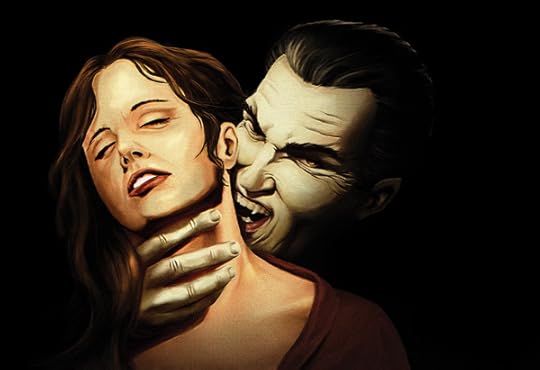Vampires

The myth of the vampire has been around for a long time. They are most commonly seen as evil beings who roam the night looking for blood to feast on. In European folklore, vampires are undead creatures often visiting loved ones and cause mischief in the neighborhood they used to live in. They wore shrouds and were described as bloated, remarkably different from the pale, gaunt vampires we know today. But where did they originate?

Vampires have been recorded in most cultures. The term vampire was popularized in Western Europe after reports of an 18th-century mass hysteria of fold belief in the Balkans that resulted in corpses being staked and people being accused in vampirism.
The word vampyre first appeared in English in 1732. It is derived from the German Vampir possibly taken from a Slovak verb vrepit sa and upir meaning “someone who thrusts or bites.”

While the myth of the vampire has evolved over time, some things have stayed consistent. Vampires have fangs used for feeding. The fangs can bee used to transform vampires and they are often seen as having a weakness to sunlight. Vampires are often shown to have a weakness to pure objects, such as holy ground or the inability to see reflections (since mirrors were originally made from silver). Other accounts suggest that they can be thwarted by forcing them to count items. This was the inspiration for the Count in “Sesame Street.”

Many attribute the idea of vampirism to Vlad the Impaler. Bram Stoker’s Dracula was based on this infamous King of Romania. He was the second son of Vlad Dracul. He ruled after his father and elder brother were murdered in Wallachia in 1447.
Stories about Vlad’s brutal acts began circulating during his lifetime. After his arrest around 1462, the stories had become widespread. The pope even included Vlad’s misdeeds in his Commentaries.
In 1456, Vlad was charged with leading a force to defend his home from invasion. His battle to protect his homeland was victorious. He personally beheaded his opponent in one-on-one combat. Still, his lands were in a ruinous state due to warfare and internal strife caused by feuding aristocrats. Vlad invited hundreds to a banquet. He had his guests stabbed and bodies impaled from anus to mouth. The bodies were displayed in his courtyard. Other stories report him having religious hats nailed to Ottoman diplomat’s skulls due to a perceived slight. Other legends speak of him dipping his bread in the blood of his victims.
In total, Vlad is estimated to have killed around 80,000 people through a variety of means. 20,000 of these people were impaled and put on display outside the city of Targovsite to be picked apart by crows.
Bram Stoker never visited Vlad’s homeland. However, he learned of these atrocities from British consul William Wilkinson. He wrote “An Account on the Principalities of Wallachia and Moldavia” With Various Political Observations Relation to Them” in 1820. In this book, Wilkinson dives into the history of Vlad Tepes – known as Vlad the Impaler.

In modern times, vampires are seen as tragic, romantic figures with works like Twilight and Vampire Diaries gracing book shelves and screens. But we can all agree the legend is here to stay!
Sources:
https://www.nbcnews.com/sciencemain/vlad-impaler-real-dracula-was-absolutely-vicious-8c11505315
Florescu, Radu R.; McNally, Raymond T. (1989). Dracula, Prince of Many Faces: His Life and his Times. Back Bay Books.
Treptow, Kurt W. (2000). Vlad III Dracula: The Life and Times of the Historical Dracula. The Center of Romanian Studies.
Reader’s Digest Association (1988). “Vampires Galore!”. The Reader’s Digest Book of strange stories, amazing facts: stories that are bizarre, unusual, odd, astonishing, incredible … but true. New York City: Reader’s Digest.
“Russian Etymological Dictionary by Max Vasmer”
Silver, Alain; Ursini, James (1997). The Vampire Film: From Nosferatu to Interview with the Vampire. New York City: Limelight Editions.



